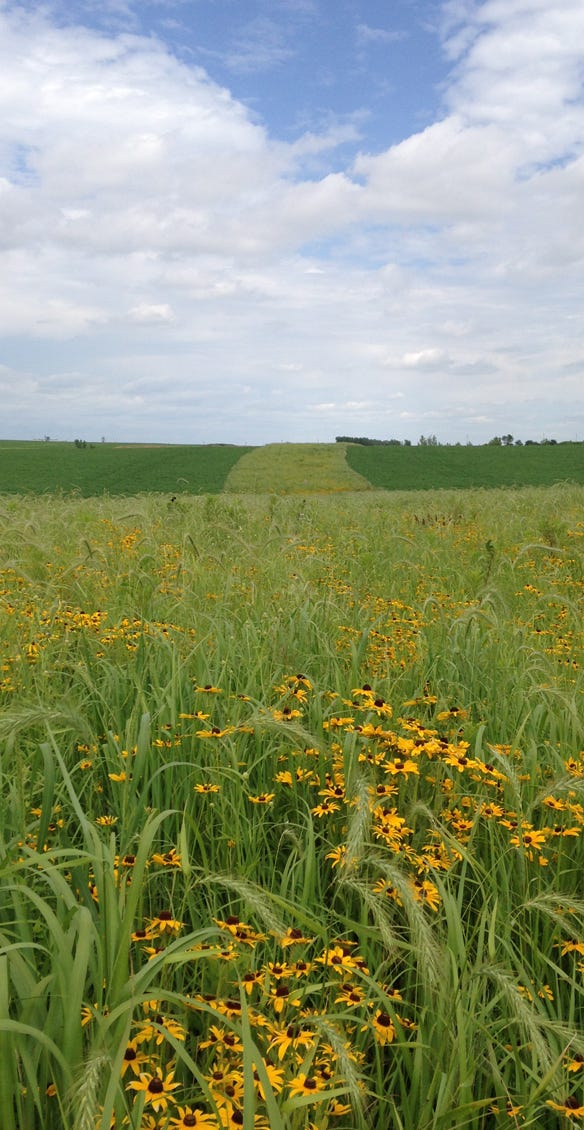January 19, 2018

Iowa State University held five workshops in 2017 to train farm advisers to become prairie strip consultants. A total of 91 people from five Midwest states attended the workshops.
The occupation of attendees ranged from technical service providers and other consultants who work directly with farmers and landowners to Extension educators, engineers and grad students.
The workshops were the first of a three-part program to achieve certification in prairie strip design, establishment and monitoring. The daylong workshops covered siting of prairie strips, prairie plant identification, seed mixtures, maintenance, determining costs and more.
 IT WORKS: By converting 10% of a row crop field to diverse, native perennials, farmers can reduce the amount of soil leaving their fields by 90% and the amount of nitrogen leaving fields through surface runoff by up to 85%.
IT WORKS: By converting 10% of a row crop field to diverse, native perennials, farmers can reduce the amount of soil leaving their fields by 90% and the amount of nitrogen leaving fields through surface runoff by up to 85%.

“These training events provided advisers with practical knowledge and information materials to help them educate farmers and landowners about prairie strip implementation and management,” says Rachael Whitehair, research assistant in the department of ag education and studies at ISU. “While it’s too early to see any changes in prairie strip implementation, more trained advisers will improve the frequency that prairie strips are discussed between landowners and advisers.”
Those who completed the first part of the training program have moved onto the second phase — creating communications that focus on prairie strips and uses the information gained at the workshop. The final step of the program is to work with the Iowa State University prairie strips team to help farmers and landowners establish and use prairie strips on their land. Those who complete this part of the program are eligible for a $1,000 bonus.
Putting practices on land
“This part of the program provides an opportunity for participants to apply the knowledge gained in the workshop that benefits their business,” Whitehair says. “Increased adoption of prairie strips across Midwest landscapes is the desired change we hope this program helps bring about.”
The McKnight Foundation and the National Fish and Wildlife Foundation through the Iowa Agriculture Water Alliance provided funding to make these workshops possible.
More information about prairie strips and the prairie strips consultant training program can be found online. Contact Rachael Whitehair at [email protected] or Nancy Grudens-Schuck at [email protected] with any additional questions.
Source: Iowa State University
You May Also Like




